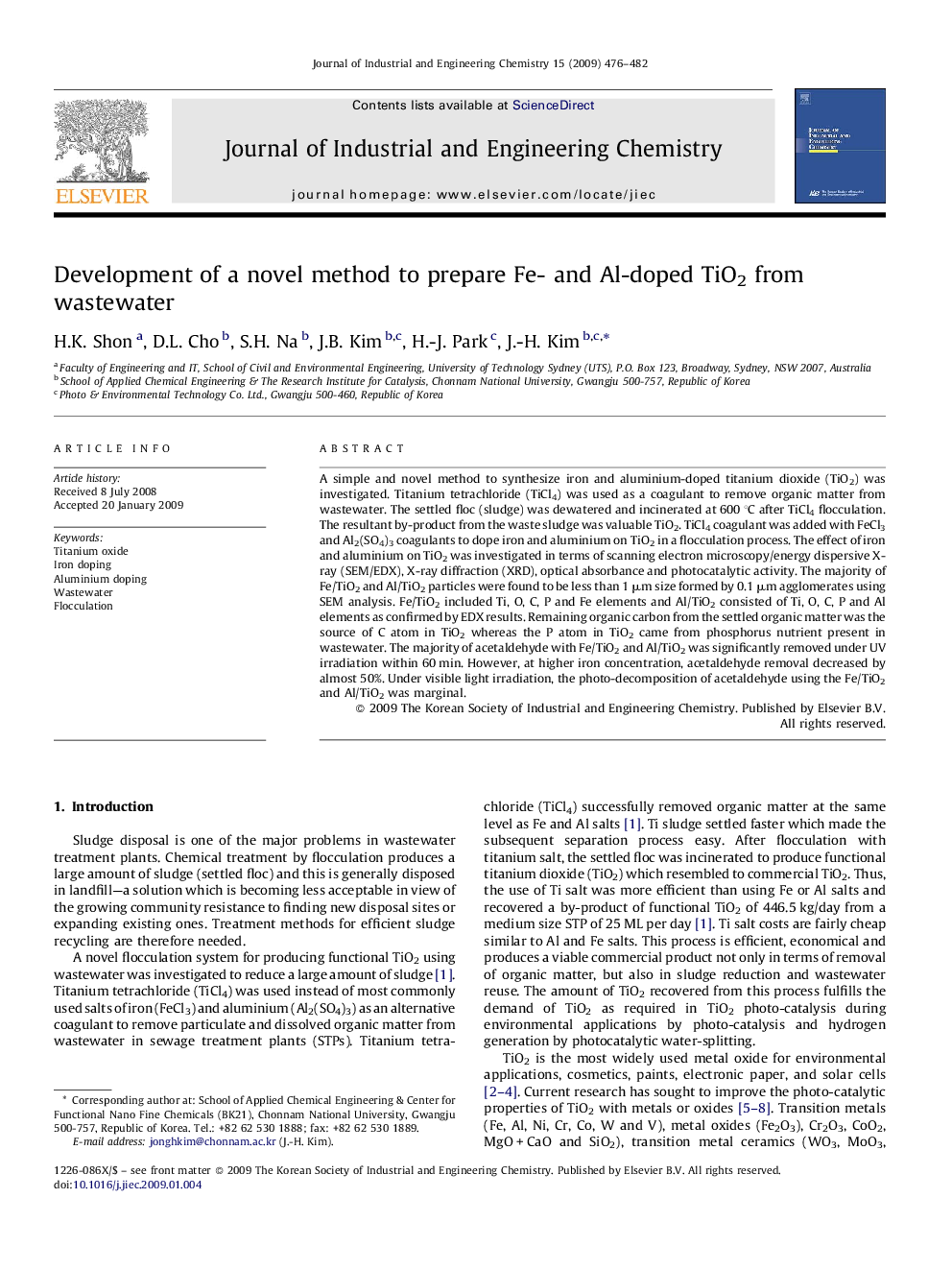| Article ID | Journal | Published Year | Pages | File Type |
|---|---|---|---|---|
| 228736 | Journal of Industrial and Engineering Chemistry | 2009 | 7 Pages |
A simple and novel method to synthesize iron and aluminium-doped titanium dioxide (TiO2) was investigated. Titanium tetrachloride (TiCl4) was used as a coagulant to remove organic matter from wastewater. The settled floc (sludge) was dewatered and incinerated at 600 °C after TiCl4 flocculation. The resultant by-product from the waste sludge was valuable TiO2. TiCl4 coagulant was added with FeCl3 and Al2(SO4)3 coagulants to dope iron and aluminium on TiO2 in a flocculation process. The effect of iron and aluminium on TiO2 was investigated in terms of scanning electron microscopy/energy dispersive X-ray (SEM/EDX), X-ray diffraction (XRD), optical absorbance and photocatalytic activity. The majority of Fe/TiO2 and Al/TiO2 particles were found to be less than 1 μm size formed by 0.1 μm agglomerates using SEM analysis. Fe/TiO2 included Ti, O, C, P and Fe elements and Al/TiO2 consisted of Ti, O, C, P and Al elements as confirmed by EDX results. Remaining organic carbon from the settled organic matter was the source of C atom in TiO2 whereas the P atom in TiO2 came from phosphorus nutrient present in wastewater. The majority of acetaldehyde with Fe/TiO2 and Al/TiO2 was significantly removed under UV irradiation within 60 min. However, at higher iron concentration, acetaldehyde removal decreased by almost 50%. Under visible light irradiation, the photo-decomposition of acetaldehyde using the Fe/TiO2 and Al/TiO2 was marginal.
